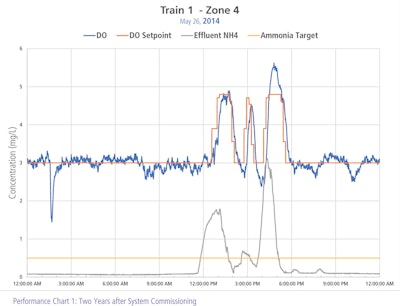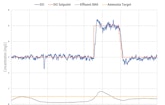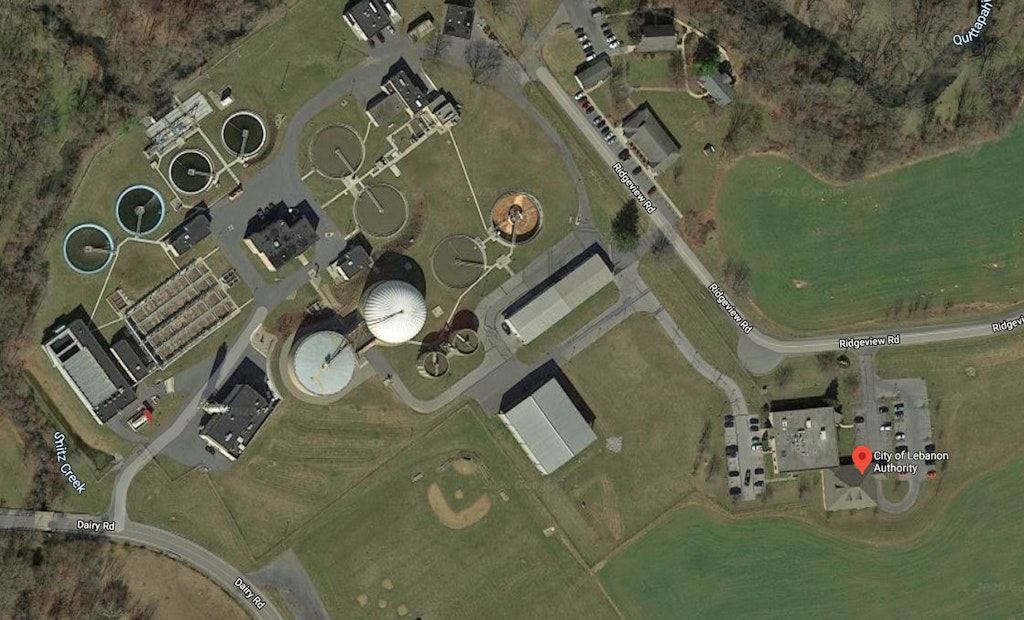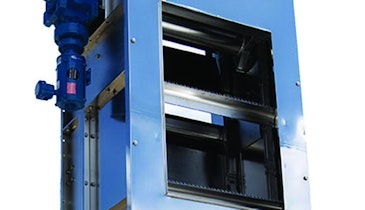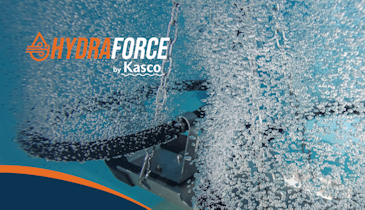Interested in Instrumentation?
Get Instrumentation articles, news and videos right in your inbox! Sign up now.
Instrumentation + Get AlertsIn 2012, the City of Lebanon (Pennsylvania) Authority wastewater treatment plant was upgraded with a smart digital control solution to support its complex operations, minimize energy usage and comply with new effluent total nitrogen limits.
The plant operates a two-stage biological process with an integrated fixed-film activated sludge system added downstream of the existing trickling filters. The IFAS system was selected to fit space limitations. Complementary components — including coarse- and fine-bubble diffusers and geared turbo blowers — provide oxygen, mixing and media scour. Tertiary denitrification filters and carbon feed provide a variable polishing step before discharge.
Operating a two-stage biological process to tight nutrient limits is a challenge. The second-stage IFAS process was specifically configured for nitrification and denitrification. For best performance, the bulk of the BOD is removed by the trickling filters while still providing enough carbon residual for denitrification.
The advanced control system (EDI - Environmental Dynamics International) was added to optimize the biological processes and to provide tight automation performance, helping the plant to remain in permit compliance and meet operating efficiency targets set by management.
Optimized response
The City of Lebanon Authority plant, serves the city and a number of surrounding boroughs and townships. It discharges into the upper Chesapeake Bay watershed, thus requiring a keen focus on nutrient removal.
The second-stage activated sludge treatment plant is split into four identical, parallel trains. Each consists of an anoxic zone, a swing zone, three IFAS zones, a final swing zone and adjustable internal mixed liquor return flow.
The swing zones are designed to be switched between anoxic and aerobic operation. This gives operators real-time control of the available reactor volume and biomass inventory for nitrification and denitrification performance.
While the design gives plant staff the equipment needed to produce the desired results, the operating window for nutrient removal is specific. Critical parameters — including carbon for heterotroph activity, oxic conditions for ammonia conversion, and internal recycle and anoxic conditions to off-gas nitrogen — are required to be optimized in real time.
The IFAS solution is also flexible; it includes mechanical mixers in each anoxic zone, fine-bubble diffusers and mechanical mixers in each swing zone, and coarse-bubble diffusers in the oxic zones with mobile media.
Smart performance
Fred Updegraff, P.E., of the Gannett Fleming engineering firm led the upgrade project and concluded that to operate effectively and efficiently, the plant needed a control system to orchestrate both the first- and second-stage biological processes and to automate blower and diffuser operations.
In consultation with BioChem Technology (the digital technology provider in the EDI operating management system), the parameters for the IFAS process were specified and a process optimization controller was provided to manage a bypass loop around the trickling filters. The controller uses a model-based algorithm, continuously calibrated in real time. It recognizes and accounts for changes in performance as the configuration of the system and process setpoints are optimized.
A complementary aeration control system automates the operations of the diffusers and blowers. Model-based algorithms are used to determine airflow and valving requirements. The algorithms account for oxygen transfer and pressure differences with the fine- and coarse-bubble diffusers; dynamic most-open valve optimization minimizes the operating pressure at the blowers. The solution also uses machine learning to provide tight automation performance as loading, temperature and diffuser operating performance varies.
In total, the advanced control system optimizes critical process setpoints, including trickling filter bypass flow, swing zone conditions, residual DO targets, and internal mixed liquor recycle rates. It also manages:
The trickling filter bypass flow valve
Swing zone mixers and diffuser airflow
The internal mixed liquor recycle pump rate
Oxic zone diffuser airflow
Blower airflow
By monitoring the performance of controlled elements, the system uses dynamic simulation to optimize total energy use. Now operators know that system performance and energy use are regulated to meet management objectives.
Long-term productivity
The control system enables the plant to meet permit requirements while minimizing operating cost. The process optimization system reduces energy use by an estimated 15% compared to operation with fixed dissolved oxygen setpoints and the aeration control system delivers an additional 10% reduction in energy compared to traditional PID-based control.
The control solution has performed without additional tuning since commissioning. System performance was documented two years after commissioning in 2014 and again in 2019, after seven years. When within the operating range of the associated components (blowers and valves), the aeration control system maintains a residual DO within plus or minus 0.5 mg/L of the setpoint more than 95% of the time. The process optimization system also continues to adjust critical setpoints to provide desired treatment performance.
This level of automation performance is unique considering a recent ABB study stating that control systems have a half-life of six months and must be retuned regularly to maintain system performance. That report also says 75% of control systems are not adding value (30% increasing variation, 15% out of range and 30% in manual operation).
The steady performance of the Lebanon control system (more than seven years without manual retuning) is setting a new standard for the industry.
About the author
Tanner Devlin (tdevlin@nexom.com) is an applications engineer with Nexom, a brand of Environmental Dynamics International.
